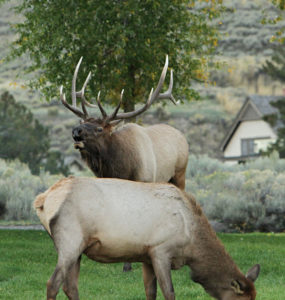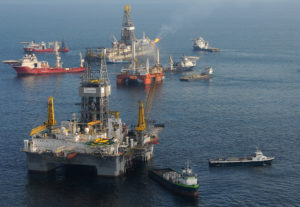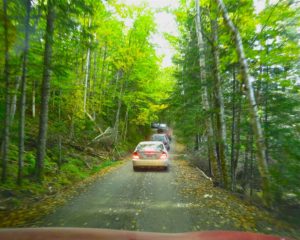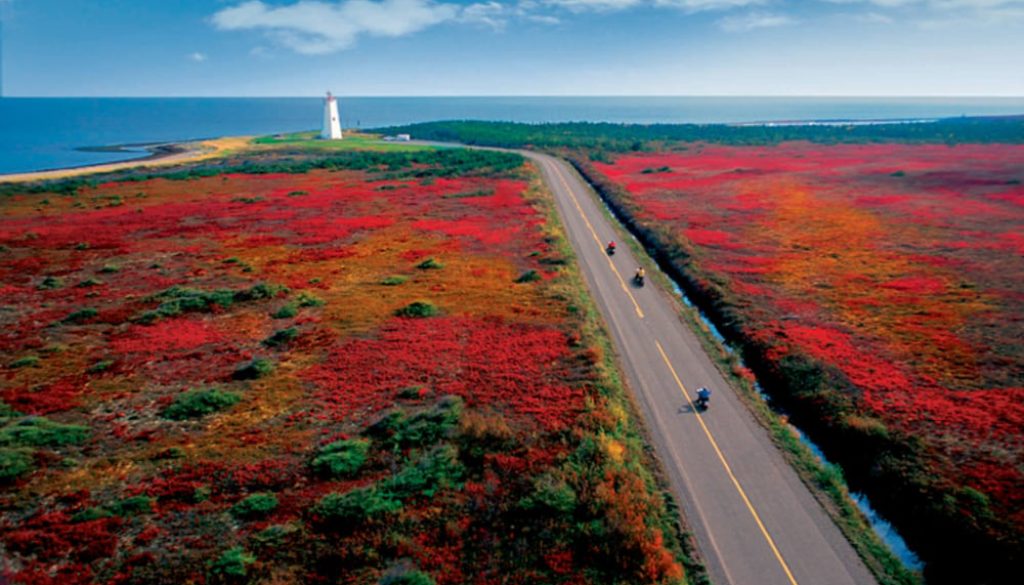Noise in nature: turning down the volume in protected areas
By: Sandra Bender
Shh—do you hear that owl hooting? Frog croaking? Moose calling?
The sounds we encounter as we move through nature make up a soundscape that is as much a part of our wilderness experiences as what we see. Unfortunately, nature’s hubbub isn’t the only thing reaching our ears as we enjoy the outdoors. Increasingly, so is the noise of human activities, like the boom of pile drivers, the roar of boat and ATV engines, and the hum of traffic. The chatter of animal life we hear as we move through nature is an integral part of healthy ecosystems. Bernie Krause, a renowned naturalist and musician who has spent over 40 years recording and studying the sounds of nature, calls this soundscape the biophony of an ecosystem.

This is how a biophony works: each species occupies a particular space within the soundscape of their ecosystem, like a forest or an ocean (Krause, 2012). There they can make the sounds that help them communicate within their environment. They can chirp, growl, yap, click, or tweet without interfering with other species in the habitat. Each ecosystem has its own natural conversation that follows rules and norms, similar to a human conversation where each person has their say and can be heard when talking in a group. For species in an ecosystem, who can be heard, when and how can mean the difference between life and death.
When animals become stressed by an unexpected or traumatic event, such as human-generated noise, the biophony is disrupted. Species go silent, sounds become chaotic, and animals flee. Eventually animals will re-find their voices and return to their natural place within the soundscape, but until this happens animals are stressed and more vulnerable to predators. Getting back to a healthy soundscape can take days, months, or even years.
Humans disrupt the soundscape more and more. However,it isn’t the only aspect of natural areas that are affected by our noise, and the consequences are numerous. Studies show that human noise can affect species physiology and behaviour, which can affect their health and survival. For example, ship engines and ocean resource exploration increase the stress hormones in whales living in the Arctic, and, in some cases, cause them to leave the feeding grounds that they have relied on for years. Our noisy activities impact wildlife communication, reproduction, ability to avoid predation, and physiological health. Noise affects habitat selection and the ability to find food. It even impacts the survival of plants by altering the behaviour of pollinators, like birds and butterflies. The impacts tend to ripple through an ecosystem, affecting wildlife from small plants to large predators.

Human noise is increasing and impacting more places on the planet, including wilderness and protected areas. The most significant noise comes from road and airplane traffic, resource extraction, construction, city expansion, and energy production, like dams. Oceans in particular are experiencing an alarming rise in human noise. According to research conducted by the Scripps Whale Acoustic Lab, ocean noise levels have been doubling every decade for the past 50 years. Scientists say that shipping and resource drilling and exploration have created a underwater droning that is now constant and heard almost everywhere. They warn if we continue to increase our noise, wildlife like whales may have nowhere to go to escape it.
Clearly, human noise is a serious problem, but with protected areas we may be able to preserve nature’s soundscape from the impacts of noise. Protected areas are often quieter than surrounding lands, especially when protecting wilderness away from roads or other developments. This suggests that protecting wilderness areas has an important role in preserving natural soundscapes and reducing the negative impacts of noise. When creating protected areas, we should consider all components of a healthy ecosystem, and that includes the soundscape.
Other regions have been successful at protecting the soundscape from human noise. In Colorado, an air traffic corridor directs planes away from Rocky Mountain National Park and concentrates the noise of air and road traffic in one area. In the ocean, restricting the number and speed of ships in areas that are important for whale mating, feeding and migrating can reduce harmful noise impacts to whales that rely heavily on the soundscape. Some protected areas also aim to reduce noise coming from everyday users, like those of us enjoying a hike in a park. In California’s Muir Woods National Monument, quiet areas and quiet activities are encouraged and have successfully reduced noise when quiet signs are posted. Protected areas in New Brunswick might also benefit from efforts to reduce noise impacts from our highways, cities, and daily activities.

When we think of nature, we often think about the “peace and quiet” of wilderness. For the health of all species, including humans, we need to preserve the quiet of these special places. Protected areas might be our best opportunity to preserve the pristine and healthy ecosystems of New Brunswick on land and at sea. With new protected areas, New Brunswick ecosystems may be filled with the songs of birds, the calls of coyotes, and the conversations of whales long into the future.
Experience the soundscape from home by visiting The Great Animal Orchestra.
Header photo of the Miscou Island peat bog courtesy of New Brunswick Tourism.
References:
Buxton, R. (2017). Human noise pollution is disrupting parks and wild places. The conversation. Retrieved December 3, 2018 from https://theconversation.com/human-noise-pollution-is-disrupting-parks-and-wild-places-78074
Dupuis-Desormeaux, N. (2017). Tutti! – Music Composition as Dialogue. York University.
Grossman, E. (2010). Noise Reduces Ocean Habitat for Whales.Scientific American. October 22, 2010. Retrieved December 3, 2018 from https://www.scientificamerican.com/article/noise-reduces-ocean-habitat-for-whales/
Krause, B. (2012). The Great Animal Orchestra: Finding the Origins of Music in the World’s Wild Places. New York, NY: Little, Brown and Company, Hachette Book Group.
My Colorado Parks. (2013). New quiet rules for jets flying over Rocky Mountain National Park. MyColaradoParks.com. Retrieved December 4, 2018 from https://www.mycoloradoparks.com/news/new-quiet-rules-for-jets-flying-over-rocky-mountain-national-park
National Research Council (US) Committee on Potential Impacts of Ambient Noise in the Ocean on Marine Mammals. (2003). Ocean Noise and Marine Mammals. Washington, DC: National Academies Press.
Stack, D.W. & Newman P. (2011). Reducing visitor noise levels at Muir Woods National Monument using experimental management. The Journal of the Acoustical Society of America,129, 1375.
Stafford, K. (2016).How human noise affects ocean habitats. Ted Talk. Retrieved December 3, 2018 from https://www.ted.com/talks/kate_stafford_how_human_noise_affects_ocean_habitats?language=en#t-560025 Oceanographer

